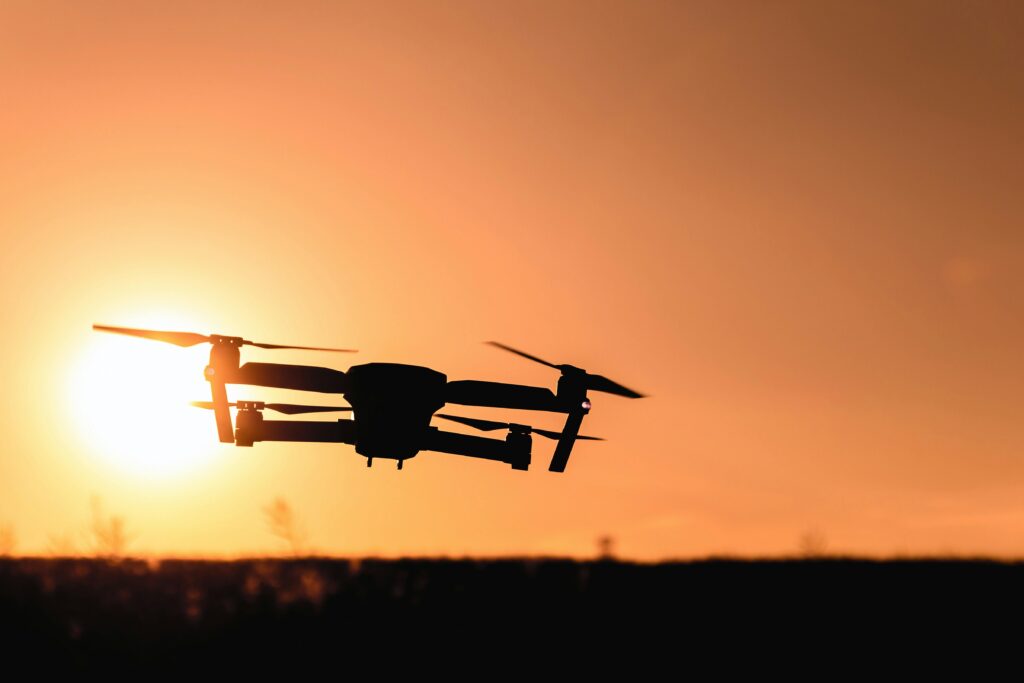
Introduction
Autonomous drones, often referred to as unmanned aerial vehicles (UAVs), are aircraft systems designed to operate and perform tasks independently of human intervention. Fitted with sophisticated sensors, GPS technology, and onboard computing units, these drones utilize artificial intelligence, machine learning, and real-time data processing to make decisions and adjust to their surroundings.
one of the important operational capabilities that determine the autonomous mission accuracy of an UAV is object or obstacle detection and avoidance. Using technologies such as GPS, Satellite information, IMU(Inertial measurement unit.).
In the modern day specially with the rapid advancements of Artificial Intelligence, the most accurate obstacle avoidance method is using AI powered programs to control the UAVs. The main subfields of Artificial intelligence that can be used in this process are computer vision and machine learning algorithms that can be implemented in to a flight computer system. Using AI and algorithms for real-time obstacle avoidance and path planning has become an active field of research today. The technology for collision avoidance is continuously being developed and improved by manufacturers, steadily increasing trust and popularity among both drone enthusiasts and professional users.
Hardware input:
to gather information for object and obstacle detection, tracking and avoidance, there are many physical sensors and other devices that can be used as input data collecting devices.
- camera: camera is the main visual input device for computers to understand the physical world around them. They serve as the main tools that collect visual data for processing, interpretation, and analysis. These visual input data can be used in computer vision applications, including object detection, facial recognition, autonomous vehicles, and augmented reality.
- Ultrasonic sensors: Infrasonic sound waves operate between 0.001 Hz and 20 Hz, while acoustic sounds fall within the range of 20 Hz to 20 kHz, and ultrasonic sounds extend from 20 kHz upwards. Ultrasonic sensors produce sound waves within this frequency spectrum and then calculate the time it takes for these waves to bounce back from obstacles in their path. Algorithms process this information to determine the distance (5-20 m) between the drone and any nearby obstacles detected within the sensor’s range, enabling drones to navigate around them effectively.
- LiDAR sensors: Some algorithms utilize data from Light Detection and Ranging (LiDAR) sensors to determine the distances between drones and nearby obstacles, producing detailed 3D topographical representations of the surroundings. One such example is the Vector Field Histogram (VFH) algorithm, which analyzes LiDAR information and reduces the drone’s speed, facilitating accurate obstacle detection and avoidance.
- Infrared Sensors: Algorithms can analyze data collected from infrared sensors, which operate similarly to ultrasonic sensors. Additionally, we are aware of the various wavelengths in the electromagnetic spectrum, which encompass Cosmic rays (10–12 m), Gamma rays (10-10 m), X-rays (10-9 m), Ultraviolet rays (10-8 m), Infrared rays (10-6 m), Microwaves (10–4 m), Radar waves (10-3 m), Radio waves (100 m), and Broadcast band (102 m). These sensors transmit infrared waves and calculate the amount of time it takes for the waves to bounce off an obstacle at close range (3-4 m) and return to the sensor.
Previously mentioned sensors are playing major part in gathering input data in modern day UAVs.
Beside the input devices, following applications are being used for the process.
- computer vision: Drones are fitted with high-resolution cameras that provide a First-Person View. Algorithms like You Only Look Once (YOLO) and Single Shot MultiBox Detector (SSD) are integrated to promptly analyze images captured and detect obstacles, facilitating intelligent video analytics. Techniques in computer vision, such as object detection and depth estimation, are employed to recognize, identify, and pinpoint obstacles while also calculating their distance from the drone.
- machine learning / deep learning and neural networks: Methods like various types of neural networks can enhance a drone’s ability to detect and avoid obstacles, as they are developed using extensive and diverse datasets of obstacle images, which has subsequently increased the precision of these models, enabling drones to better evade obstacles.
- path planning: Upon gathering information from algorithms that analyse sensor and camera data for obstacles, path planning algorithms such as Dijkstra’s employ metaheuristics to create a safe trajectory for the drone, taking into account its present location, the positions of obstacles, speed, and other relevant factors.
Importance:
building a accurate model for object detection, tracking and path planning is a major task in an autonomous UAV. There are many advantages that can be gained from building a avoidance model.
- reduce accidents: Outfitting drones with collision prevention features can decrease the chances of accidents that could be expensive, protect your investment, and ensure the safety of people, animals, and property.
- autonomous delivery: Instances of drones navigating around obstacles are increasingly common and represent a key opportunity for the delivery services sector. Leveraging this crucial capability, pharmaceutical suppliers and major online retailers like Google and Amazon are pouring resources into drones equipped with collision avoidance technology, as it is essential for effective drone delivery operations.
- Aerial surveillance: Drone obstacle detection is positively impacting the surveillance sector by utilizing high-resolution cameras, which improves the functionalities of security companies and law enforcement for automated visual assessments.
- Disaster mitigation: The integration of drone obstacle avoidance technology has transformed disaster response, significantly improving search and rescue efforts. These uniquely designed devices are capable of navigating difficult landscapes, including deep mines, steep hills, narrow canyons, thick forests, and dangerous or conflict-prone regions.
In this article, we have learned about a basic introduction about object tracking and obstacle avoidance systems. In the next article, we will take a deep dive into how to build a model for object detection and tracking.
